Key takeaways
- Paranormal infotainment combines storytelling and the unexplained, provoking curiosity and emotional engagement with the mystical.
- Visiting places like Eastern State Penitentiary reveals the historical weight of locations, inviting reflection on human experiences and suffering.
- Sensing presence involves tuning into subtle environmental changes and trusting one’s instincts, fostering a deeper connection with history.
- Encounters in haunted places can shift perspectives from fear to empathy, encouraging understanding of the past’s emotional echoes.
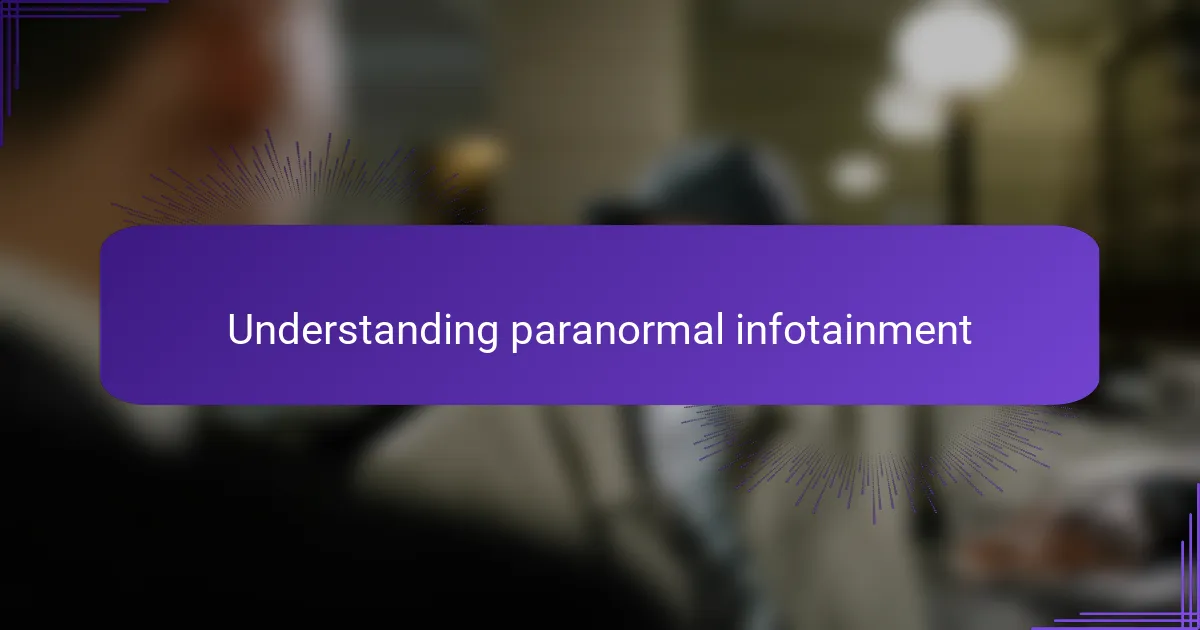
Understanding Paranormal Infotainment
Paranormal infotainment blends storytelling with the unexplained, creating a space where facts and mystery coexist. I’ve often found myself torn between skepticism and fascination—how much of it is real, and how much feeds our desire for thrill? It’s this delicate balance that keeps me coming back, eager to explore the unknown with an open yet questioning mind.
What strikes me most is how paranormal infotainment invites us to experience emotions like curiosity, fear, and wonder all at once. Have you ever felt that chill down your spine while watching or reading something that hints at another world? That emotional connection is what transforms mere information into an immersive journey, one that feels both personal and universal.
At its core, paranormal infotainment isn’t just about sharing ghost stories or creepy encounters; it challenges us to think beyond what’s visible. I believe this genre encourages a form of exploration not just into haunted places but into our own beliefs and experiences. Isn’t that why these stories resonate so deeply—we’re searching for something beyond the ordinary?
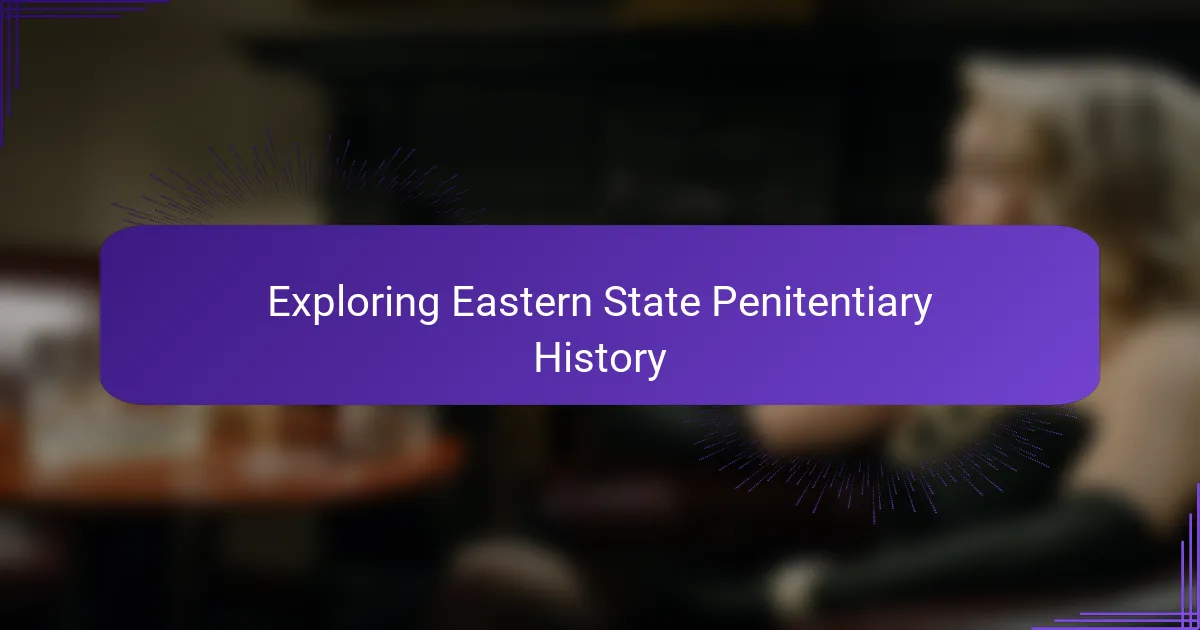
Exploring Eastern State Penitentiary History
Eastern State Penitentiary’s history reads like a chapter from a gothic novel, with its imposing walls built in 1829 and a design meant to reform prisoners through isolation. Walking those long, empty corridors, I couldn’t help but wonder what echoes of the past still lingered—were those silence and shadows really just remnants of history, or something more?
The penitentiary was revolutionary for its time, pioneering solitary confinement to encourage reflection and penitence. Yet, knowing the psychological toll this took on inmates made me pause. How might the weight of so much loneliness and suffering embed itself into the very stones of this place?
Exploring this blend of architectural innovation and human hardship gave me a new perspective. It felt less like a building and more like a living memory, one that invites us to look beyond the facts and feel the emotional pulse of history’s darker moments. Have you ever felt a place’s past reach out quietly, challenging you to acknowledge what once was?
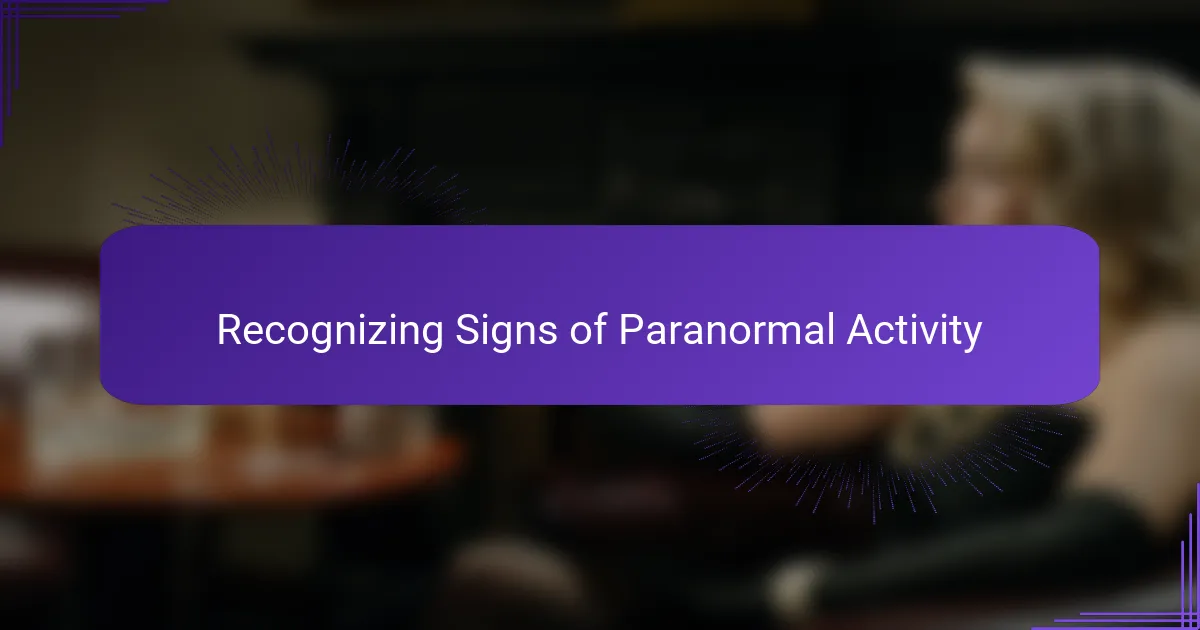
Recognizing Signs of Paranormal Activity
Recognizing signs of paranormal activity often means tuning into subtle shifts that most might overlook. I remember feeling an unexplained drop in temperature around me, a sudden chill that wasn’t linked to any draft or weather change. It made me question—could this coldness be more than physical, perhaps a silent whisper from the other side?
Sometimes it’s the flicker of a shadow just beyond your vision or an unidentifiable sound that breaks the eerie silence. These moments caught me off guard, stirring a mix of curiosity and unease. What if these anomalies are attempts at communication, signals that the space holds more than just memory?
Then there are the feelings—an unsettling sense of being watched or a presence hovering close. I’ve experienced this heavy atmosphere, like invisible eyes tracing my every move. It made me wonder how much our senses can truly grasp of the unseen world and whether some impressions reach us through emotions rather than sight or sound.
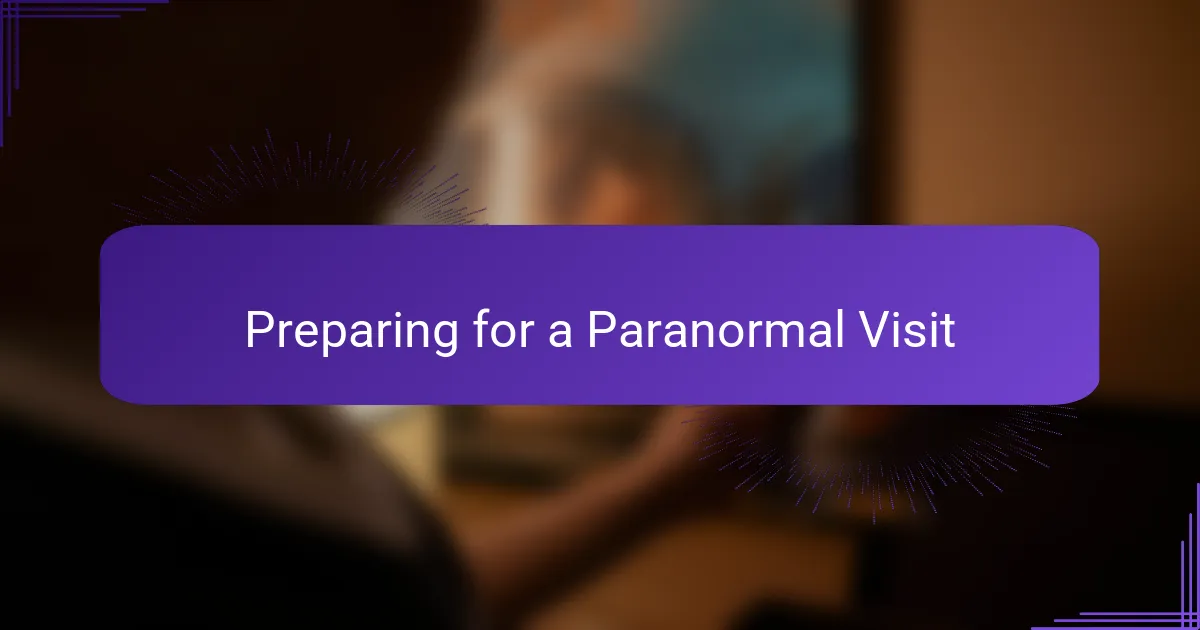
Preparing for a Paranormal Visit
Preparing for a paranormal visit means more than just packing your gear; it’s about readying your mind and spirit for what’s to come. I always take a moment to quiet my thoughts, reminding myself to stay open but grounded—after all, anticipation can sometimes blur the line between imagination and reality. Have you ever noticed how expectation can heighten every creak and shadow?
It’s also crucial to gather the right tools, whether it’s a flashlight, recording devices, or simply a notebook. I once underestimated the power of simple observation until a small detail I jotted down later revealed something unexpected. Preparation isn’t just about equipment; it’s about creating a space where curiosity meets respect for the unknown.
Before stepping into a place like Eastern State Penitentiary, I ask myself: am I ready to confront whatever feelings or sensations might arise? The emotional weight of such historic and haunted sites can be intense. I’ve learned that embracing that mix of excitement and apprehension helps me become more attuned—sometimes the presence feels strongest when you’re both open and prepared to receive it.

My Experience at Eastern State Penitentiary
Stepping into Eastern State Penitentiary, I immediately felt an uncanny stillness, unlike any other place I’ve visited. The silence was heavy, almost palpable, as if the very air was waiting, watching. Have you ever walked into a room and sensed that the past is pressing in on you? That’s exactly what happened to me here.
As I moved through the dimly lit corridors, a sudden shiver ran down my spine—not from the cold, but from an inexplicable sensation that someone unseen was nearby. It wasn’t fear as much as a profound awareness, an almost respectful acknowledgment of the lingering presence. I found myself wondering if the stories of restless souls trapped in solitary confinement were more than just legend.
One moment still sticks with me: standing alone in Cell Block 12, a quiet whisper seemed to brush past my ear, though no one was near. Was it a trick of the mind, or something more? I asked myself if Eastern State holds onto fragments of its sorrow and torment, sharing them with those willing to listen. That encounter left me both unsettled and strangely connected to this haunting place.

Techniques for Sensing Presence
There’s something subtle about sensing presence that goes beyond just seeing or hearing. For me, it started with stillness—pausing to really feel the atmosphere and noticing the tiny changes in air pressure or temperature. Have you ever stood so quietly that you begin to catch whispers of something unseen? Those moments often told me more than any flashlight or camera could.
I also found that tuning into my own instincts helped—a kind of inner radar that senses when something shifts around me. It’s like when you enter a room and suddenly every hair on your neck stands up for no clear reason. I learned to trust those feelings rather than dismissing them as nerves or imagination because sometimes, they were the clearest signs of presence.
Another technique I relied on was mindful observation, paying close attention to the environment without rushing to label what I experienced. Instead of questioning every flicker or sound, I asked: what is this moment trying to tell me? This gentle curiosity opened the door for unexpected encounters and made sensing presence feel less like chasing ghosts and more like joining a conversation with the past.
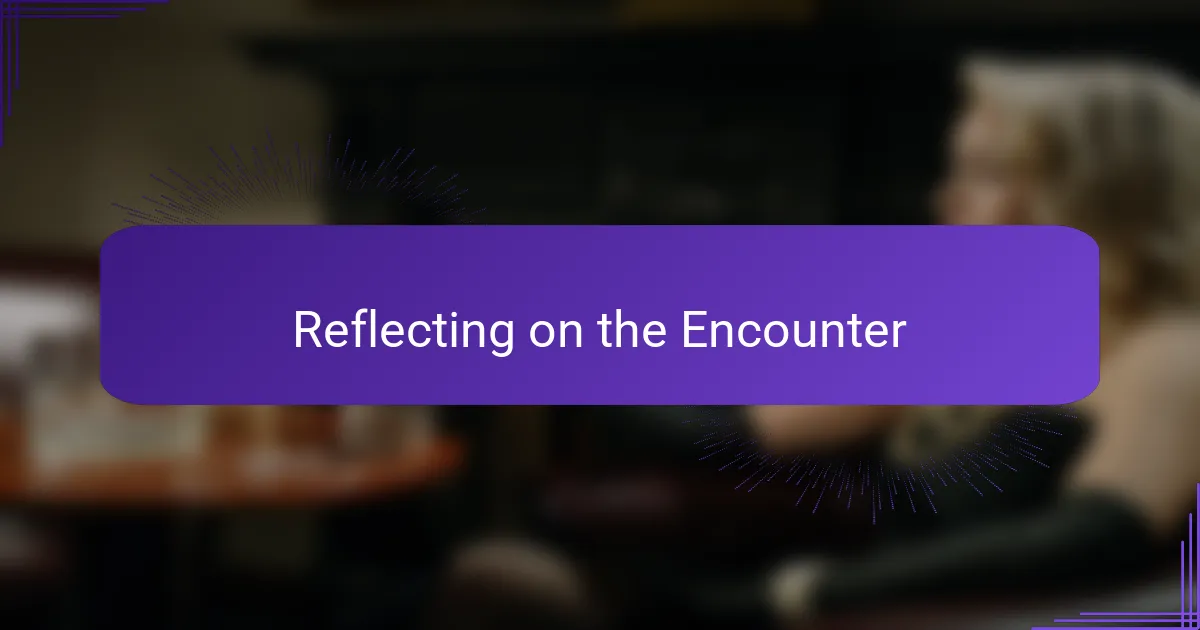
Reflecting on the Encounter
Reflecting on that moment in Eastern State Penitentiary, I realize how deeply it affected me—not just as a visitor, but as someone who momentarily became part of its story. The presence I felt wasn’t just about fear or thrill; it was an invitation to connect with the echoes of the past. Have you ever walked away from a place carrying a sense of quiet understanding, as if something unseen quietly welcomed your attention?
I also found myself replaying that whisper in Cell Block 12, wondering how much of our experience is shaped by what we’re willing to sense. Is it possible that places with such heavy histories hold fragments of emotion that reach beyond time? From my perspective, these encounters are less about proving the paranormal and more about empathy—feeling the weight others once bore.
Looking back, the encounter challenged my usual skepticism and made me embrace a subtle openness. It taught me that sometimes, presence is less about dramatic manifestations and more about gentle moments of awareness. Doesn’t that shift the way we think about haunted places—from sites of fear to spaces of something profoundly human?